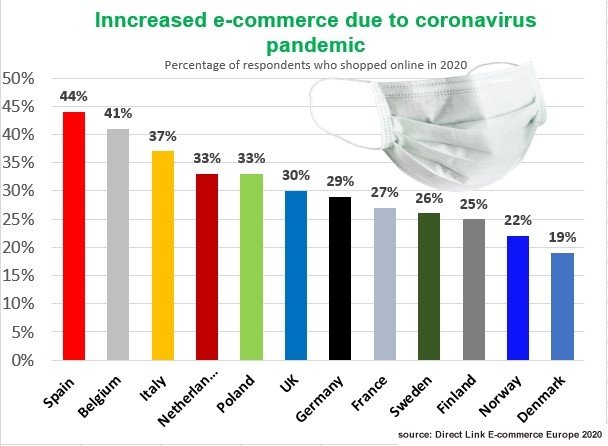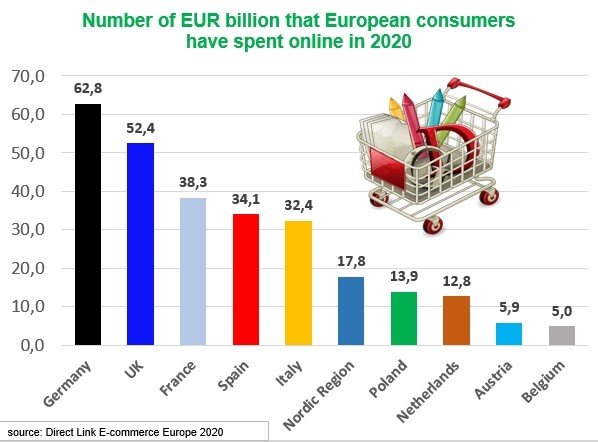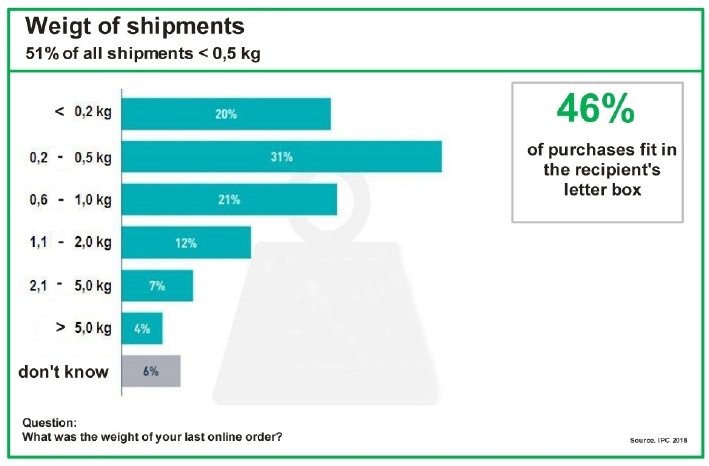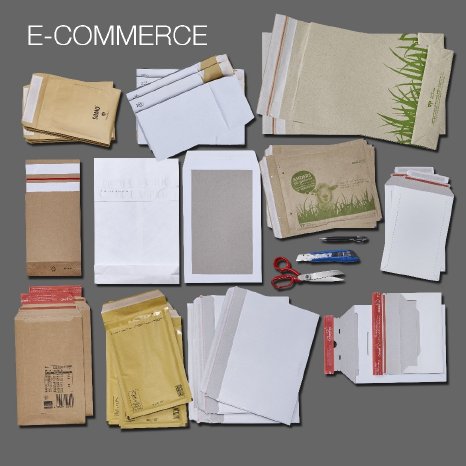The right packaging – available from FEPE members – could save retailers €1.5 billion in failed delivery costs, improving their bottom line.
ECOMMERCE IS EXPLODING
The past years have seen a fast and steady shift from in-store to online retail trading. The Covid-19 pandemic has massively accelerated the trend: online orders reached record levels in 2020. A recently published report from Direct Link shows that the number of people who said they had ‘shopped online more often because of the pandemic’ ranged from 19% to 44%. The increase was greatest in Spain, Belgium and Italy. In the UK, IMRG Capgemini Online Retail Results reveal that UK online sales grew 74% year-on-year in January 2021, when ecommerce accounted for an astonishing 35.2% of all retail sales in the UK.
Even if online shopping falls again after in-store shopping resumes, pundits unanimously expect that the share of ecommerce in retail will increase significantly and permanently.
The 2020 increase came from both a higher number of orders and larger orders. According to a new Loqate study, 69% of retailers reported a massive increase in the average order value (AOV) of their online sales.
Overall, in the three largest European markets, goods worth more than €150 billion were ordered online in 2020. For the whole of Europe, the 2020 value is estimated at more than €300 billion.
More orders are international too; 54% of retailers report a trend towards international orders as consumers increasingly trust global retailers and retailers in neighbouring countries.
This unrelenting shift from traditional to online retail offers both opportunities and challenges for retailers, consumers and service providers.
RELIABLE DELIVERY IS DECISIVE FOR CUSTOMER SATISFACTION
Successful delivery is vital for customer loyalty. A study by the German Retail Federation (Handelsverband Deutschland - HDE) showed that for 52% of buyers smooth delivery of the order is one of the most important criteria for rating retailers favourably and for repeat orders.
Unsurprisingly, a failed delivery attempt is very annoying for both the retailer and the recipient.
DELIVERY FAILS DUE TO ABSENCE AND THEFTS
Deliveries can fail because of an incorrect entry in the address database – a problem aggravated by the increase in orders via smartphones, where poorer usability can increase input errors on forms. More often, deliveries fail because the recipient isn’t at home when the delivery arrives.
In practice, deliverers usually either hand over the parcel to a neighbour or place it on the doorstep. Unfortunately, not all neighbours pass deliveries on to their rightful owners. And parcels left by the front door or elsewhere outside the property are often stolen.
Many parcel service providers allow for such ‘substitute deliveries’ in their terms and conditions. Unfortunately, these clauses are usually ineffective as a legal means to protect providers, consumers or retailers in case of loss claims. If there are customer complaints because the goods could not be properly delivered to the customer, the parcel service providers quickly come under pressure from the online traders.
99% of ecommerce companies confirm that some of their deliveries are not delivered properly or they’re delivered late. 24% of entrepreneurs admit that more than 10% of orders can’t be delivered on the first attempt.
So it’s understandable that the online industry as a whole is looking for solutions that increase delivery efficiency and prevent the loss of customers due to delivery problems in the last mile.
THE HIDDEN COSTS OF FAILED DELIVERIES
With higher order volumes and global goods traffic, poor delivery performance is a major threat to a company’s success. As the Loqate study reveals, failed deliveries are a growing problem for retailers. After a failed delivery, most consumers expect compensation. And many firms feel this is only fair: 53% try to redeliver, with 36% paying any additional courier charge; 41% offer a refund; and 34% apply a discount.
The cost of failed deliveries is high. About 6–8% of deliveries fail on the first attempt, costing the retailer €14.69 euros per order, on average, for returns handling, redeliveries, goods replacement, reimbursements or compensation.
MANY ORDERS COULD FIT IN THE MAILBOX
A 2018 study published by the International Post Corporation (IPC) stated that more than 50% of all online orders weighed less than 500g. Due to their size, more than 40% of the goods ordered online could be packaged for safe delivery into a standard domestic mailbox.
Appropriate packaging for small orders is the exception rather than the norm, however. Who hasn’t received small items packed in large cardboard boxes filled out with plastic, paper or polystyrene fillers? The frequent use of grossly oversized packaging is a disaster from an ecological point of view, never mind the ‘inconvenience’ of not fitting in the mailbox.
Access to more mailbox-friendly delivery services and products would be highly advantageous for online retailers as well as consumers. Successful delivery first time would be much easier.
Once goods are deposited in the mailbox, they are safe from theft and damage.
FEPE MEMBERS PRODUCE SUITABLE PACKAGING
Many companies have now taken on the challenge of providing ecommerce packaging for smaller, relatively lightweight products.
FEPE is committed to supporting its Europe-wide network of member companies to offer and promote packaging suitable for mailbox delivery of goods. With a complete range of innovative solutions now available from FEPE members, almost all packaging problems for ecommerce products can be solved.
The product spectrum ranges from easy-to-open cardboard pockets, to padded paper and bubble envelopes, gusset bags with expanding side seams and water-resistant pockets.
Thanks to ecommerce, the envelope market is today alive and well, with scope for innovative paths to growth. FEPE members can help online retailers solve their packaging problems, generating more customer satisfaction and loyalty through secure mailbox delivery of online orders.
Read more
For more details on ecommerce trends in Europe and on deliveries issues, see:
Ecommerce in Europe, Direct Link, 2021, http://bit.ly/dir-link
Econsultancy.com, http://bit.ly/econUK74
Fixing Failed Deliveries, Loqate, 2021, http://bit.ly/loq-report






